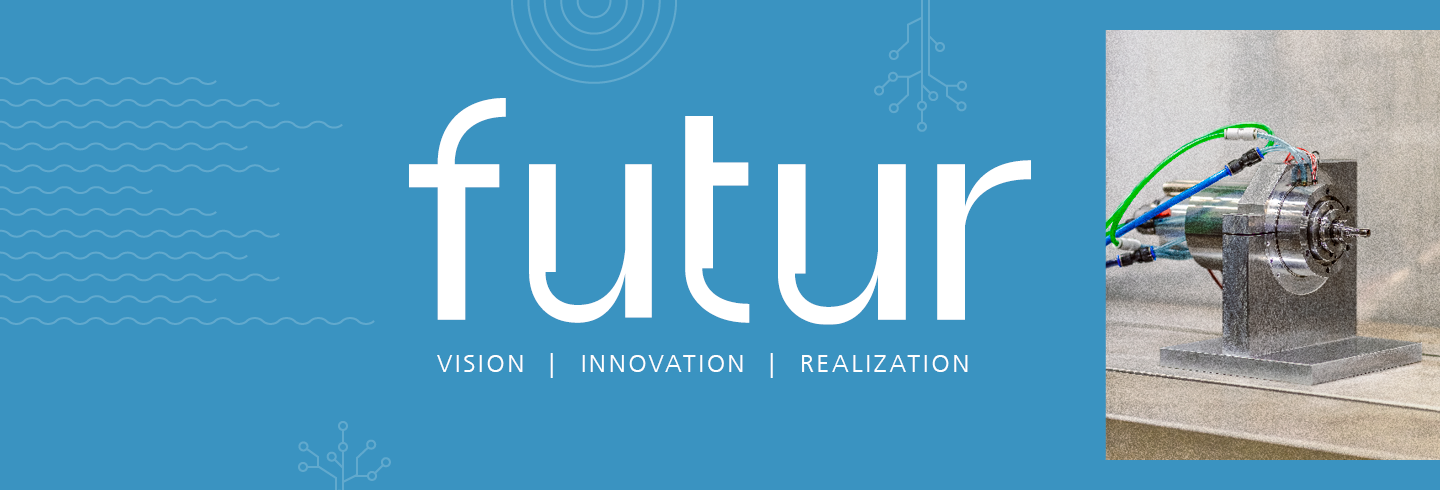It can heat as well as cool – a new thermoelectric system enables temperature control of motorized spindles as needed, thus increasing the precision of machine tools.


Whether it is glass lenses for cameras, mirrors for the aerospace industry or gear wheels for watches – in precision manufacturing, the highest level of accuracy is essential. Even the smallest errors or uneven surfaces can impair the functionality of components. For this reason, the parts must be milled or ground to micrometer precision. The need for components machined in this way in the fields of optics, metrology, automotive engineering, and information and communications technology is growing steadily. In order to be able to meet the demand in the future, highly productive precision manufacturing is necessary.
The problem: Machine tools currently used for this purpose have a long warm-up time, which limits productivity. The necessary warm-up times result from the high requirements placed on working accuracy in precision manufacturing, which requires a steady state of thermally induced displacements. Up to 75 percent of geometric component errors can be traced back to thermally induced displacements.
Motorized spindles, in which, for example, a milling tool is clamped are the critical component of a machine tool: Due to their proximity to the tool center point, they have a significant influence on the working accuracy. Drives and bearings of motorized spindles are significant heat sources. Electrical as well as mechanical power losses cause the spindle housing and shaft to heat up. As a result, these components expand and cause a shift of the tool center point.
To reduce this effect, state-of-the-art fluid cooling systems are used in motorized spindles to dissipate a large part of the induced heat flows. Conventional fluid cooling systems, however, do not respond to changes in heat flows caused, for example, by a variation in rotational speed due to tool changes. Even a short downtime of a motorized spindle in the course of a tool or workpiece change leads to a thermal disturbance, which requires a new warm-up time. This is a waste of energy that must be avoided not only for reasons of productivity, but also for climate protection.
In order to improve the thermoelastic behavior of motorized spindles and, in particular, to reduce the warm-up time after a spindle downtime, researchers at IWF of TU Berlin together with the German manufacturer of motorized spindles Alfred Jäger have developed a thermoelectrically tempered motorized milling spindle. Core components of the temperature control system are so-called Peltier modules: tiny cubes made of the semiconductor material bismuth telluride, connected electrically in series and arranged between two ceramic plates. When a voltage is applied, the semiconductors transport heat from one side to the other. In total, a heat flux density of up to 15 watts per square centimeter can be achieved. For the developed motorized spindle, this means that theoretically a heat flow of up to 2.5 kilowatts is available – this is comparable to the cooling capacity of an air conditioning system for a larger room. For a conventional spindle cooled with water, in contrast, it is not possible to determine how much heat is dissipated.
Installing the Peltier modules, therefore allows operators to control the heat flow and adjust the temperature of the spindle as required. For example, a temperature of 25 degrees Celsius can be set at the front bearing and this can be maintained regardless of changes in rotational speed. By reversing the applied current direction, the spindle can also be preheated to reduce unproductive warm-up times. Think of it like a heat pump for machine tools: by reversing the direction, both cooling and heating become possible.
To test the potential of the thermoelectric temperature control system, comparative measurements were carried out between the prototype and a commercially available reference spindle. Both motorized spindles were operated in a test rig at a speed of 55,000 revolutions per minute and stopped for a downtime of 300 seconds, which was intended to simulate a workpiece change. The measurements show: A controlled heat supply significantly reduces the shaft displacement during standstill as well as the warm-up time of the prototype. This opens up considerable potential for increasing productivity in precision manufacturing. Bottom line: Thermoelectrically tempered motorized milling spindles can not only reduce the risk of component defects, but also have a positive effect on the energy efficiency of machine tools in use.
 Fraunhofer Institute for Production Systems and Design Technology
Fraunhofer Institute for Production Systems and Design Technology